Semiotics Midterm
1/21
There's no tags or description
Looks like no tags are added yet.
Name | Mastery | Learn | Test | Matching | Spaced |
|---|
No study sessions yet.
22 Terms
Saussurean model
Saussure offered a 'dyadic' or two-part model of the sign. He defined a sign as being composed of: a 'signifier' (signifiant) - the form which the sign takes; and. the 'signified' (signifi ) - the concept it represents
signifier + example
the physical or mental form of a sign (like a word or image) ex: the word dog, the word tree, the sound

signified + example
the concept or meaning that the signifier represents ex: picture of a dog, picture of a tree (what it actually is)

the principle of difference in Saussure’s model + example
the meaning of a sign is created from its differences from other signs within the same system (“In language, as in any semiological system, whatever distinguishes one sign from the others constitutes it’“) Ex: bc the traffic light colors are different there is meaning behind each color
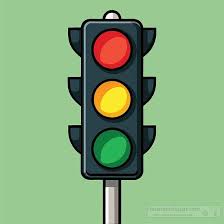
the arbitrariness of the sign + example
there is no intrinsic, direct, or self-evident relationship between a signifier and its signified (a concept rather than an extralinguistic referent) (meaning behind signs are not natural rather man-made though society. ) ex: only reason “tree” refers to a tree is because people say it does")
the Peircean model (sign as a triadic entity)NOT FINISHED
signs mediate between their objects and their interpretants in semiosis, the triadic process of determination

representamen + example
the physical form of the sign that stands for something else “sign vehicle” ex: smoke (represents the object: fire)

object
something the sign refers or represents (ex: the actual fire)

interpretant
the effect produced by the sign or the sense made of it (ex: person now knows there might be a fire or somethings burning)
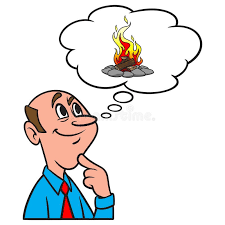
symbolic + example
the signifier (the physical/material) does not resemble the signified (concept), so the relationship between the two must be taught (ex: languages, alphabetical letters, phrases)
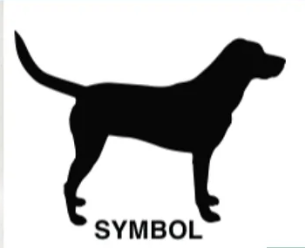
Iconic
the signifier (the physical/material) resembles the signified (concept), so the relationship is obvious. (ex: , metaphors, portrait, a cartoon)

Indexical
the signifier (the physical/material) is directly connected to the signified (concept), but the relationship is at the interpreter's discretion. ( ex: smoke, thunder, footprints)

paradigmatic dimension + example
a set of signs (such as words, images, or sounds) that share a common characteristic and can replace one another within a certain context. (vertical axis, based on selection, substitution, and similarity)
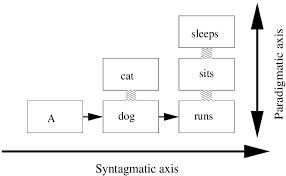
syntagmatic dimension
the combination of signs in a particular order to form a meaningful whole (meaning changes when the order changes: ( ex: “The cat chased the mouse.” vs. “The mouse chased the cat,”)

markedness
the state of standing out as nontypical as opposed to regular or common (ex:hot/cold, hero/villain, raw/cooked)
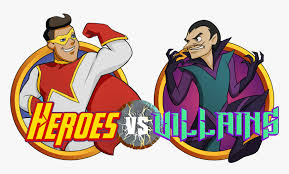
semiotic square
Map of oppositions which is how meaning is made

social codes
a set of shared understandings among users about the relationship between signifiers and signifieds
encoding
The production of texts by encoders employing relevant codes
decoding
The comprehension and interpretation of texts by readers, listeners, or viewers with reference to relevant codes.

intertextuality
The various links in form and content that bind a text to other texts
intratextuality
Internal relations within a text (ex: repetition?)